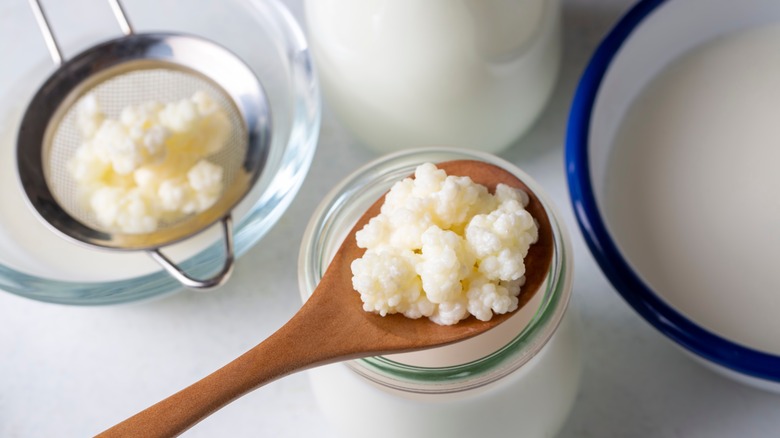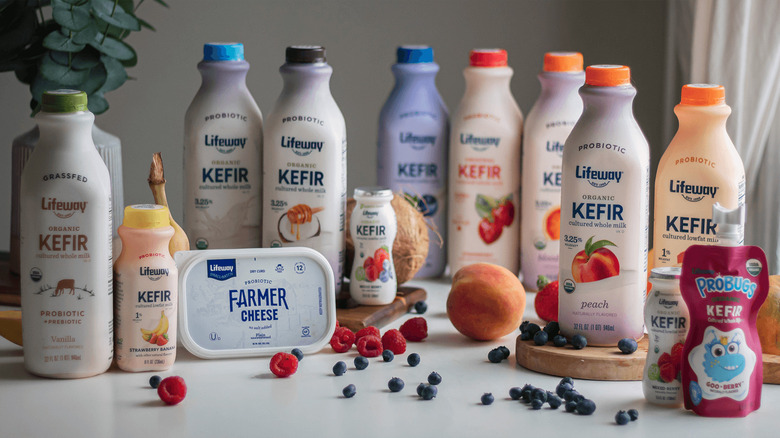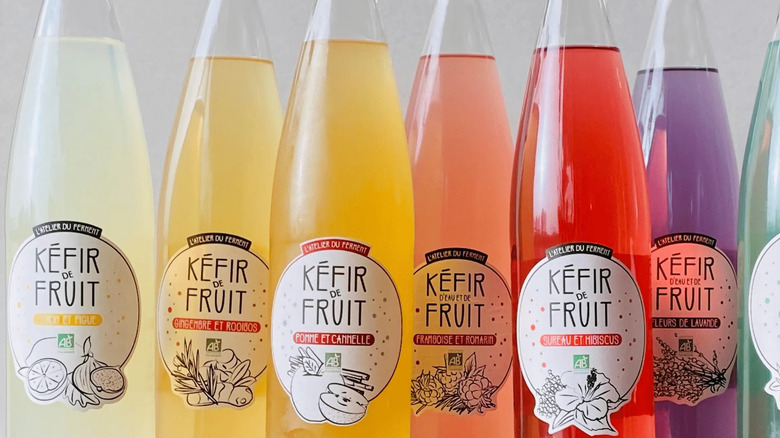What Is The Difference Between Dairy Kefir And Water Kefir?
We are living in the peak probiotic era. Kombucha home brewing has gone mainstream, there's a host of probiotic sodas taking up premium fridge space at your local Whole Foods, and kimchi can be found on anything from tacos to Bloody Marys.
But somewhere between the realm of yogurt and booch lies kefir, a probiotic food/drink that can refer to a couple of very different products. While Americans might have a vague understanding of kefir as something that lives in the dairy aisle between the milk and butter, the French recognize it mainly as a soda-like sparkling beverage flavored with ginger or fruit.
The mixup comes from the fact that there are two separate, drinkable probiotic products both called kefir. One, called dairy kefir or milk kefir, is a delicious breakfast item best sprinkled with chia seeds or used as a base for protein-rich smoothies. Meanwhile, water kefir or fruit kefir is a refreshingly light alternative to commercial sodas packed with high fructose corn syrup. But why do these two products, which appear so different on the surface, share the same name?
What is dairy kefir?
Dairy kefir can most simply be explained as something like a tangy, drinkable yogurt. It is thick and often flavored with anything from honey to hibiscus, and low fat or nonfat versions exist, though both are slightly less tangy than whole fat kefir. It originated in Eastern Europe over 2000 years ago but has grown in popularity in the US and abroad. The most recognizable brand of dairy kefir in the U.S. is Lifeway Foods, the national market leader and one of the early forerunners in the industry back in the 1980s.
Dairy kefir is made by fermenting milk with kefir grains (a symbiosis of bacteria and yeast comparable to the SCOBY used in making kombucha). The microbes feed off the milk and produce lactic acid and carbon dioxide as byproducts, turning the milk into kefir. It ferments rather quickly and can be made at home, using kefir grains which can be ordered online and rehydrated to reactivate them.
Dairy kefir is high in protein, calcium, and vitamin D, and contains live probiotic cultures that benefit digestion.
What is water kefir?
Water kefir, on the other hand, is a different story. Also known as fruit kefir, water kefir is thought to have originated at least by the 1800s in Mexico, where it is called Tibicos, though it has appeared elsewhere in the world, including Eastern Europe, where dairy kefir is common.
It's actually made in a similar way to dairy kefir, with kefir grains fermented using water and sugar instead of milk. The grains used for milk kefir and dairy kefir are different, but share similar properties. Because the kefir grains feed off sugar, water kefir can also be made with honey, coconut water, or juice — though the grains will need to be fed more sugar after the fermentation to keep them healthy. It is often brewed with fruit because of the mild flavor it produces naturally.
Water kefir tastes like a fizzy, fermented soda, with some of the funk associated with kombucha, but a much lighter and less acidic taste profile. In fact, some companies that market "probiotic sodas," like Kevita, are actually selling water kefir under a different name.


